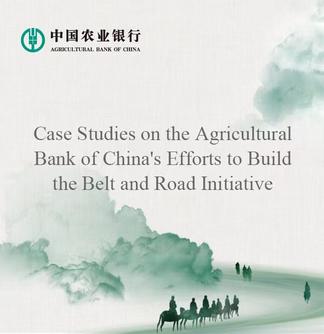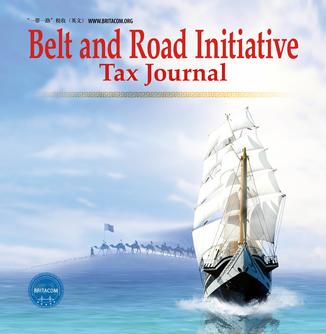Aerial photo shows technicians of State Grid Zhejiang Electric Power Company checking power transmission lines to make sure the stable operation of local power supply in Zhoushan, east China's Zhejiang Province, Oct. 23, 2020. (Xinhua/Xu Yu)
BEIJING, April 24 (Xinhua) -- In the first quarter of this year, the total electricity consumption of China's whole society increased by 2.5 percent year on year, and the nationwide electricity consumption of the internet and related services rose by 25.7 percent year on year on a daily average basis.
These figures underscore the robust growth momentum in the digital economy sector. Electricity consumption for photovoltaic and wind energy equipment manufacturing has shown substantial growth in provinces like Guangdong and Yunnan. A series of electricity data reflects the upward, new, and green trends, indicating that China is rapidly unleashing new momentum for its economic growth.
-- Upward momentum: rising electricity consumption highlights regional industrial vitality
According to data from the National Energy Administration, the total electricity consumption of the whole society in the first quarter reached 2,384.6 billion kilowatt-hours (kWh), a year-on-year increase of 2.5 percent.
According to Jiang Debin, an expert with the China Electricity Council (CEC), after adjusting for the leap year of 2024, the average daily electricity consumption nationwide in the first quarter of 2025 increased by 3.7 percent compared to the same period last year, slightly higher than the 3.6-percent growth rate recorded in the previous quarter.
In breakdown, power consumed by the country's primary and secondary industries gained 8.7 percent and 1.9 percent year on year, respectively, while that of the tertiary sector rose by 5.2 percent.
Noting that the primary industry leads in electricity consumption growth, Li Jinkai, a distinguished professor at the School of Economics of Beijing Institute of Technology, said that the phenomenon indicates significant achievements in rural revitalization. This growth is driving the acceleration of electrification, possibly related to rapid advancements in rural power grid transformation and increased agricultural mechanization.
Li further noted that the growth rate of industrial electricity consumption stands at 1.9 percent, while the added value of the secondary industry increased by 5.9 percent compared to the same period last year, highlighting improvements in industrial energy efficiency and structural optimization. The growth rate of electricity consumption in the tertiary industry is higher than that of the secondary industry, reflecting the service sector's increased contribution to economic growth, which aligns with the service sector's 61 percent share in the GDP during the first quarter.
By regions, economic heavyweight provinces like Guangdong and Shandong have demonstrated remarkable performance.
A relevant person in charge of the State Grid Shandong Electric Power Company said that the upward curve of electricity consumption indicates a positive signal about the province's economic growth and the improvement in its industrial structure. The continuously upward-trending figures serve as a vivid footnote to the sustained recovery in production and consumption.
-- New drive: electricity consumption in technology and new consumption sectors surges
New industries, models, and dynamics propelled by new quality productive forces are emerging as the core drivers behind the growth of electricity consumption.
Data released by the CEC shows that in the first quarter, the nationwide electricity consumption of the high-tech and equipment manufacturing industries increased by 4.8 percent year-on-year on a daily average basis. Among them, the electricity consumption of the automobile manufacturing industry increased by 10.4 percent year-on-year on a daily average basis, with provinces like Anhui and Shaanxi registering growth rates exceeding 15 percent. The electricity consumption of the computer, communication, and other electronic equipment manufacturing industries increased by 6.0 percent year-on-year on a daily average basis, with regions like Beijing and Shandong achieving over 20 percent growth.
Huang Bo, a professor at the School of Finance of Renmin University of China, believes that as traditional manufacturing undergoes transformation and upgrading, the trend towards high-end manufacturing is evident. The automobile manufacturing sector and the high-end manufacturing, represented by computer and communication equipment manufacturing, are expected to become the core drivers of industrial growth.
New consumption scenarios have also made significant contributions. Driven by industries such as AI, big data, cloud computing, and 5G, the nationwide electricity consumption of the internet and related services increased by 25.7 percent year-on-year on a daily average basis in the first quarter, showcasing the thriving development momentum in the digital economy sector.
For example, Guizhou Province witnessed a strong growth in electricity consumption for internet data services in the first quarter, with a year-on-year increase of 30.95 percent. This is attributed to the rapid expansion of its digital industry.
Huang anticipates that electricity demand in the tertiary industry will remain strong, fueled by continuous innovation in the digital economy, rising penetration of new energy vehicles, and the growth of green consumption.
He noted that emerging high-energy sectors such as data centers and 5G infrastructure, along with low-carbon services, will become new engines of electricity growth. With policy support for new consumption and industrial upgrades, power use in the tertiary sector is expected to rise further, with continued structural optimization.
-- Green transition: green manufacturing becomes new engine for economic growth
Data shows that in the first quarter, the clean energy power generation from hydro, nuclear, wind, and solar power by industrial enterprises above designated size reached 0.7 trillion kWh, a year-on-year increase of 10.3 percent.
According to Li, economic and social development is now distinctly characterized by green and low-carbon practices, evidenced by a continuous decrease in energy consumption per unit of GDP. The synergetic effect between green transformation and the pursuit of high-quality economic growth is becoming increasingly prominent.
The growth momentum continues in industries represented by new energy. Specifically, the electricity consumption in photovoltaic equipment and components manufacturing, new energy vehicle manufacturing, and wind energy prime mover equipment manufacturing increased by 9.6 percent, 6.9 percent, and 55 percent year-on-year, respectively.
Huang noted that the continued rise in electricity consumption in new energy-related industries stems from the dual drivers of industrial chain expansion and strong demand for renewable energy equipment. Growing market penetration of new energy vehicles and faster infrastructure development have boosted power use in charging and swapping services. Meanwhile, the renewable energy sector keeps expanding, with wind power equipment leading electricity growth and photovoltaic manufacturing steadily rising.
The data shows a sharp 42.3 percent year-on-year rise in average daily electricity consumption for the electric vehicle (EV) charging and battery-swapping service industry nationwide, fueled by booming EV adoption and the corresponding rapid expansion of supporting infrastructure.
The energy industry chain, EV industry chain, and related services are set to become key pillars of a modern industrial system, supported by green transformation policies, said Huang.
He noted that rising electricity use reflects regional efforts to boost new energy development, promote clean transitions in high-energy sectors, and improve clean energy efficiency for greening manufacturing. This shift marks not only a transition to new growth drivers but also deeper economic restructuring in China. (Edited by Yang Yifan with Xinhua Silk Road, yangyifan@xinhua.org)




 A single purchase
A single purchase









